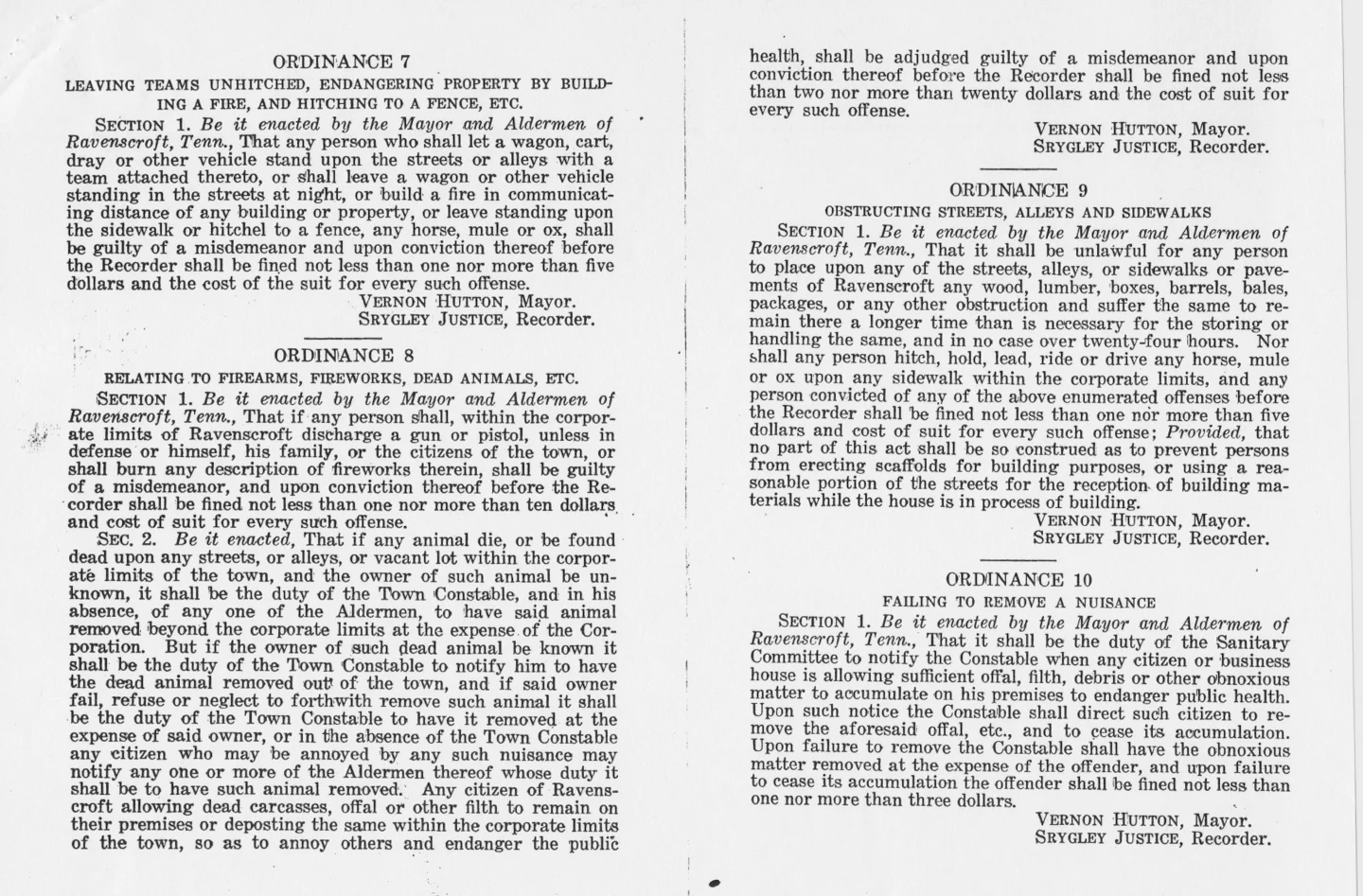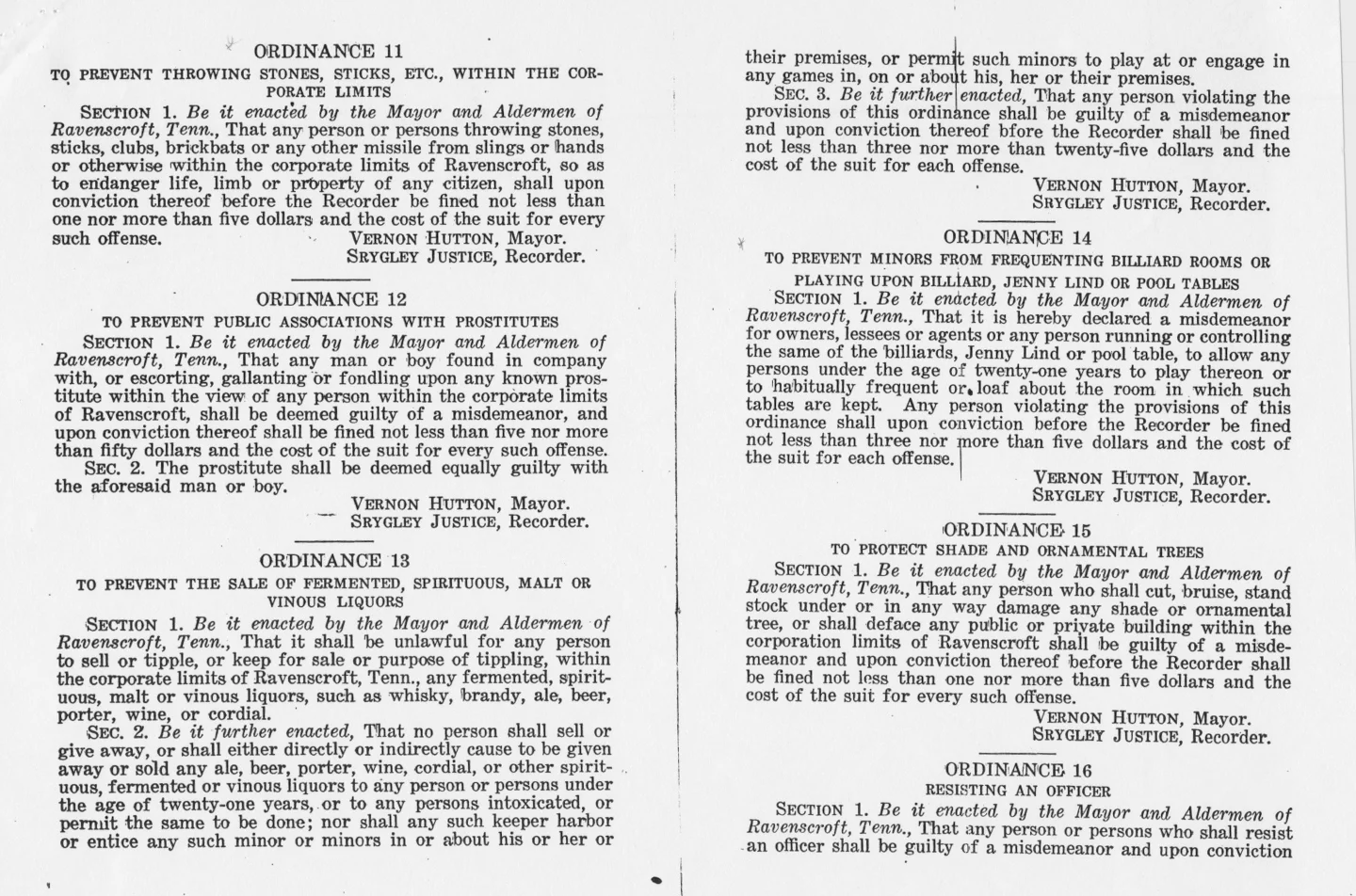At the turn of the century, the 174 foot deep Peerless Mine was sunk at Ravenscroft that was one of four coal-mining communities on Bon Air Mountain. The need for miners created by the new mine brought new families to the community of Ravenscroft. All four of the coal mining towns on Bon Air Mountain were much the same with Front Street as the main street of the town. There were schools and ball fields, company stores, depots, hotels, check offices, barbershops, post offices, doctor’s offices, churches, cemeteries, jails (calaboose) and weigh stations. There were also mule barns and blacksmith shops.
The new mining industry created a need for experienced miners. Czechoslovakian immigrants were recruited to come to Ravenscroft to work in the mines and settled in the Glade Creek community. One of those families, the Zizka family, came to America in 1903 and settled in Cleveland, Ohio before coming to Glade Creek in 1914. They were supervisors in the Ravenscroft mine.
The railroad was extended from Bon Air Mountain through DeRossett , a railroad section town, to Ravenscroft in 1904. Ravenscroft was incorporated as a new town in 1908 and residents were able to choose a mayor, recorder, and other town officials. The ordinances / laws were very different from today. A copy of the 1918 Code of Ordinances that was adopted under Mayor Vernon Hutton is below.
Baseball was the primary pastime in each of the four communities and it is said that baseball was as vital to the town as the company store. Each coal town had its own team and the whole town would gather to cheer them on. The mining community ball teams were name for their owners/directors:
- Ravenscroft/ Bowman
- Bon Air / Wrigley
- Eastland / Ruppert
- Clifty / Cummins
Two of the most noted people with roots in the Town of Ravenscroft were Earl Webb and Carl Rowan.
Earl Webb, a Ravenscroft baseball player, went on to play for the Boston Red Sox, New York Giants, Chicago Cubs, and Cincinnati Reds. It is said that when Earl Webb arrived in New York from Ravenscroft, the scout had promised to meet him at the train station. The scout did not show up and Webb got lost as he tried to find the stadium. He said that if he had found the train station, he would have given up and gone back to Ravenscroft. While he was wandering around New York City, a car pulled over and the driver asked Webb where he was going. That driver turned out to be Babe Ruth who gave Earl Webb a ride to the ballpark!
African American diplomat and journalist, Carl Thomas Rowan, was born on August 11, 1925, in Ravenscroft. From his poor beginning, Rowan’s determination to work hard and get an education resulted in him graduating as valedictorian of his high school class. During his freshman year at Tennessee Agricultural and Industrial State College in Nashville in the fall of 1942, he entered a training program that resulted in him becoming one of the first fifteen African American persons in history to gain a commission as an officer in the U.S. Navy. He was trained at Oberlin College in Ohio and at the Naval Midshipmen School at Fort Schuyler, New York, and he served during World War II.
Rowan had a distinguished career as a journalist and foreign correspondent in India, Pakistan, and Southeast Asia. In January 1961 Rowan was appointed deputy assistant secretary of state for public affairs in the administration of President John F. Kennedy. Rowan later served as ambassador to Finland and as director of the U.S. Information Agency. He became the first African American to hold a seat on the National Security Council and oversaw a staff of thirteen thousand. In 1965 Rowan resigned to accept an offer to write a national column for the Field Newspaper Service Syndicate and to do three weekly radio commentaries for the Westinghouse Broadcasting Company.
The Ravenscroft coal mining operation survived the longest of the four mining communities and was the only operating mine on Bon Air Mountain when it was officially closed in 1936.











